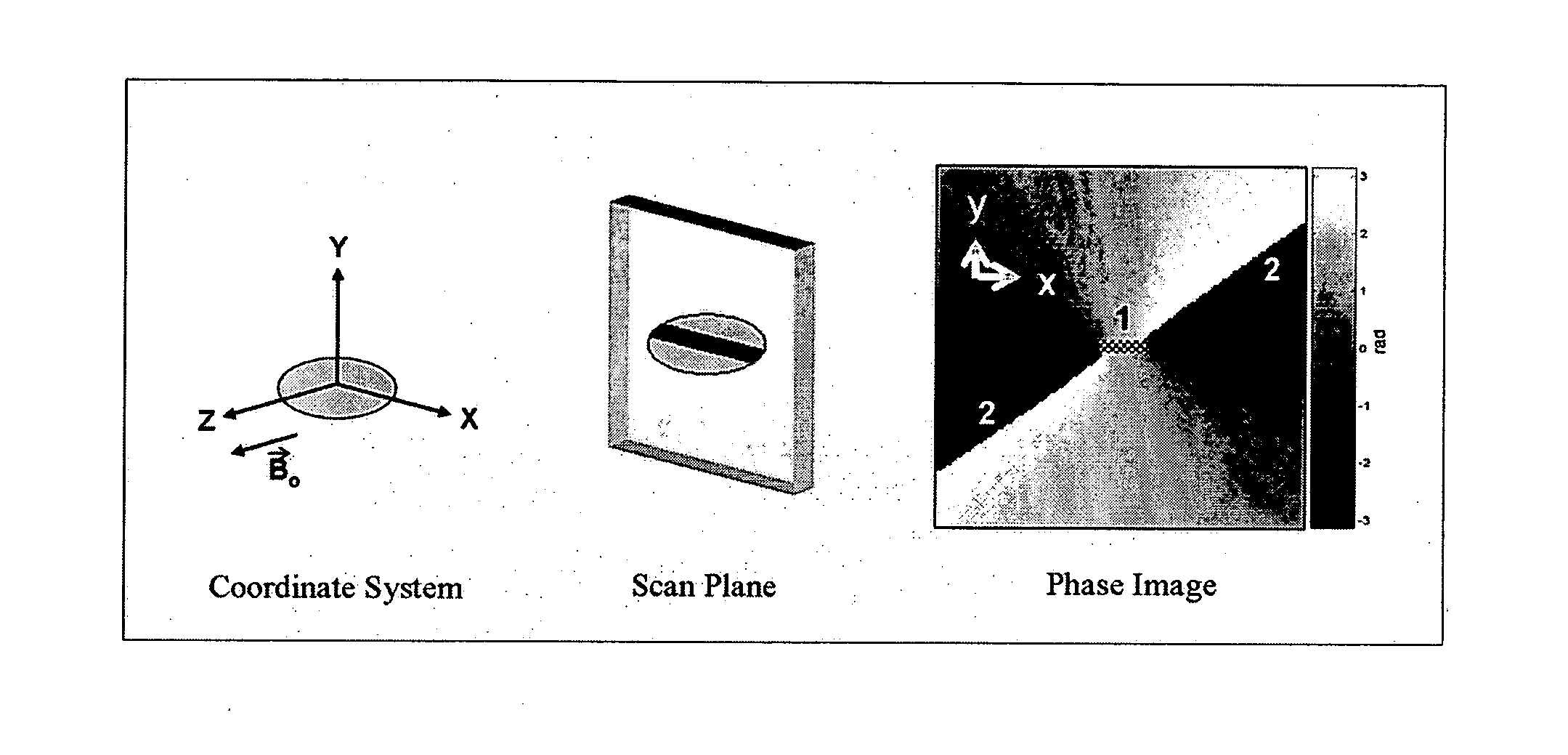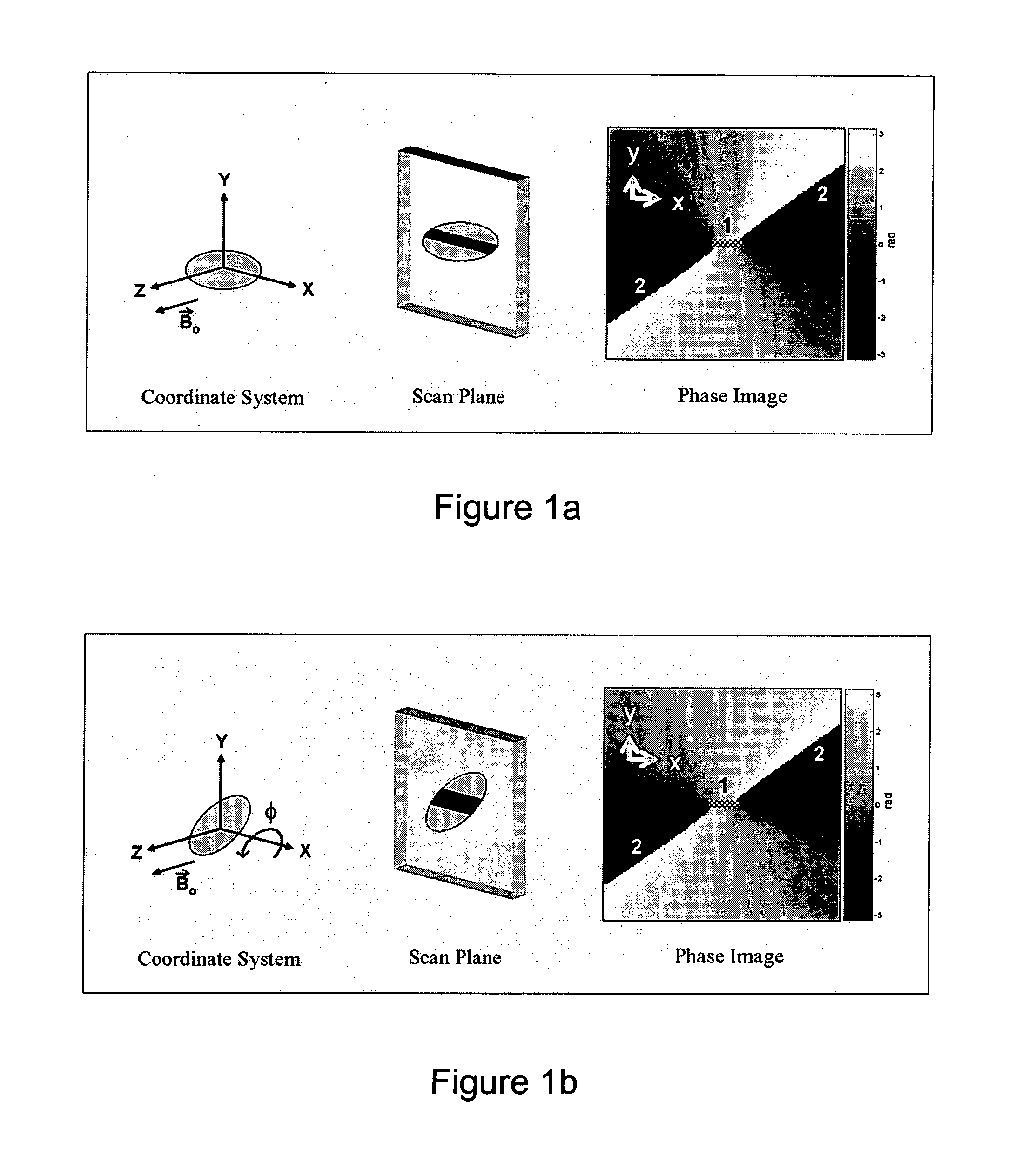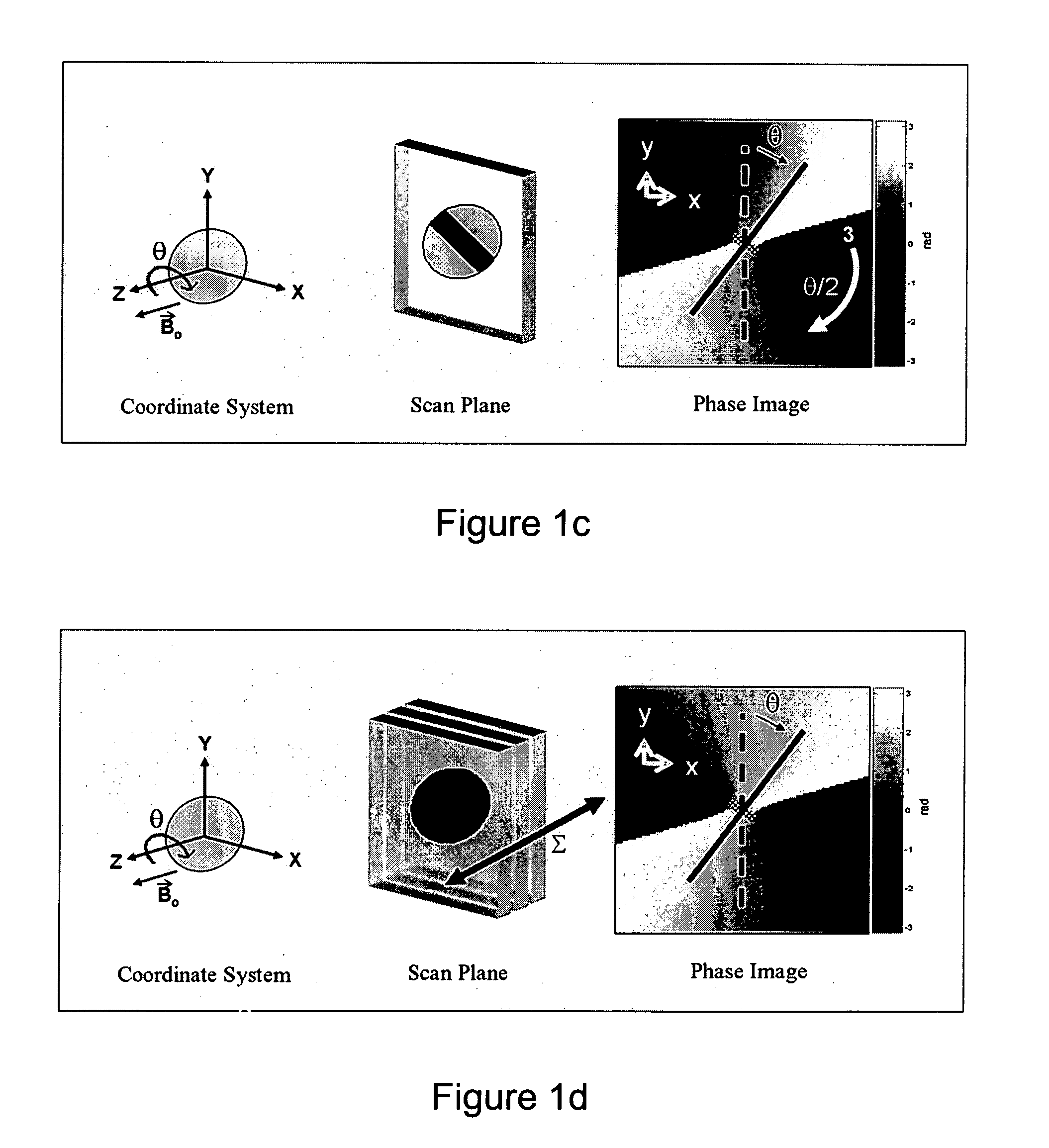Catheter tracking with phase information
a technology of phase information and catheter, applied in the direction of catheter, magnetic variable regulation, sensors, etc., can solve the problems of 3-6% of complex, direct visualization critical, and relatively high complication rate, and achieve the effect of reliable tracking of the position of the catheter
- Summary
- Abstract
- Description
- Claims
- Application Information
AI Technical Summary
Benefits of technology
Problems solved by technology
Method used
Image
Examples
Embodiment Construction
Definitions:
[0077] As used herein the phrase “phase pattern” refers to a spatial map of phase in the MR signal in a particular plane of interest.
[0078] As used herein the phrase “catheter tracking” refers to the act of determining information about the position and / or orientation of a catheter tip.
[0079] As used herein the phrase “marker for perturbing the phase of the magnetic resonance signal” means using a receive coil of arbitrary shape used to introduce phase into the MR signal through its receive sensitivity field or using a material of arbitrary shape and sufficient magnetic susceptibility to perturb the static magnetic field in the volume surrounding the material.
[0080] As used herein the phrase “microcoil” refers to small tuned radiofrequency antenna used to receive MR signal or transmit an MR excitation field.
[0081] As used herein the phrase “field map” refers to a spatial map of the static magnetic field in a plane of interest.
[0082] Active MRI tracking of catheter...
PUM
 Login to View More
Login to View More Abstract
Description
Claims
Application Information
 Login to View More
Login to View More - R&D
- Intellectual Property
- Life Sciences
- Materials
- Tech Scout
- Unparalleled Data Quality
- Higher Quality Content
- 60% Fewer Hallucinations
Browse by: Latest US Patents, China's latest patents, Technical Efficacy Thesaurus, Application Domain, Technology Topic, Popular Technical Reports.
© 2025 PatSnap. All rights reserved.Legal|Privacy policy|Modern Slavery Act Transparency Statement|Sitemap|About US| Contact US: help@patsnap.com



